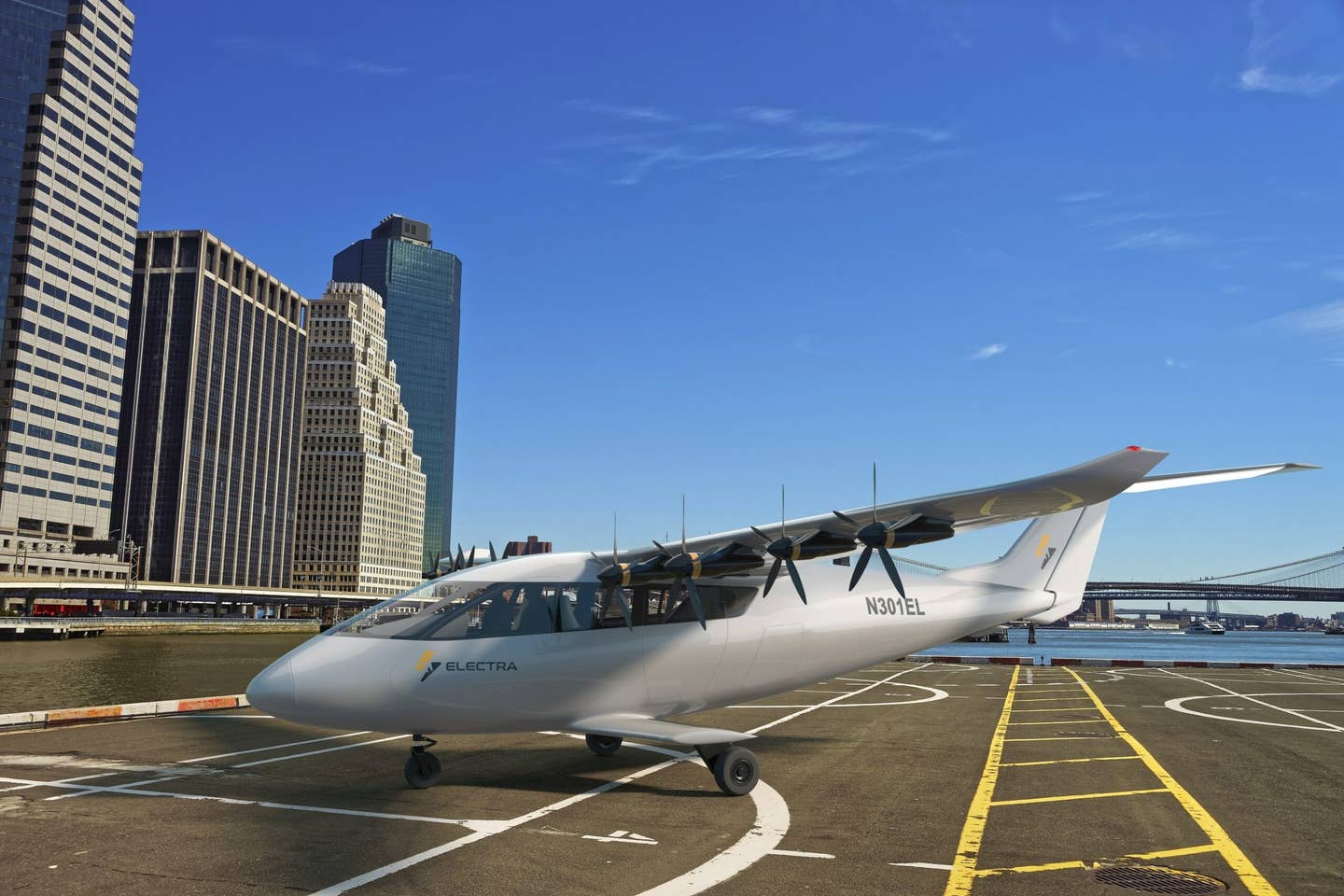Lockheed Martin Invests in eSTOL Startup Electra
Virginia-based startup Electra.aero says it has secured a key investment from Lockheed Martin as it seeks to develop a hybrid electric, ultra-short takeoff and landing (eSTOL) aircraft.

Lockheed Martin Ventures invests in Electra’s Series A funding round to support flight testing Electra’s hybrid-electric eSTOL aircraft full-scale technology demonstrator in 2022. [Courtesy: Electra]
Virginia-based startup Electra.aero says it has secured a key investment from Lockheed Martin as it seeks to develop a hybrid electric, ultra-short takeoff and landing (eSTOL) aircraft.
The announcement, made this week, did not disclose the amount of the investment from Lockheed Martin Ventures—the venture capital arm of Lockheed Martin Corp. (NYSE:LMT)—but Electra says it is part of its Series A funding round.
About the Aircraft
Electra is one of dozens of urban air mobility (UAM) companies looking to launch in the coming years. By 2040, analysts project the market for global urban and regional advanced air mobility (AAM) aircraft will be valued between $250 billion and $1 trillion.
Electra claims its eSTOL aircraft can operate from spaces as small as 300 feet by 100 feet, using its patent-pending distributed electric propulsion and blown lift technology.
Unlike its competitors in the electric vertical takeoff and landing (eVTOL) aircraft space, Electra is focused on hybrid technologies.
"Hybrid-electric propulsion will influence every aspect of aviation," said John S. Langford, Electra founder and CEO, in a statement.
A small turbine-powered generator also recharges the batteries mid-flight, eliminating the need for new ground-charging infrastructure.
Chris Moran, vice president and general manager of Lockheed Martin Ventures, said it’s that hybrid focus that led to his company’s investment.
"Electra's technical approach to sustainable aviation is differentiated, and we are excited to see this concept mature," Moran said in a statement “…Hybrid-electric aircraft have the potential to deliver operational and environmental advantages over other aircraft, including increased payload and range without gambling on battery improvements.”
The quieter and more environmentally friendly aircraft is currently being designed to transport up to 1,800 pounds of cargo or move seven to nine passengers up to 500 miles.
Electra also says its aircraft can operate in a variety of environments, ranging from busy urban areas to remote landing strips, and fly missions ranging from on-demand intracity flights to medical missions, cargo transportation, scheduled passenger service, and beyond.
The company says it plans to begin flight testing a full-scale, hybrid eSTOL technology demonstrator aircraft later this year, and hopes to get FAA approval in 2026 under Level 3 multiengine type certification, low-speed (max operating speed less than 250 kts) airplane, under 14 CFR.
Looking Ahead
As Electra works toward flight testing, it is also working in partnership with the U.S. Air Force under a contract the two entities signed in June as part of its Agility Prime initiative to explore new and developing technologies for military use.
Additionally, in July, NASA awarded a contract to Electra under the Small Business Technology Transfer (STTR) program to mature its eSTOL development.

Subscribe to Our Newsletter
Get the latest FLYING stories delivered directly to your inbox






